In today’s noisy digital landscape, getting the attention of healthcare professionals (HCPs) is harder than ever. Physicians and pharmacists are bombarded daily with information — from journal updates and sales rep emails to EHR notifications and patient messages.
Traditional detailing alone can’t sustain meaningful engagement anymore. The modern HCP journey demands digital precision — meeting clinicians where they already communicate.
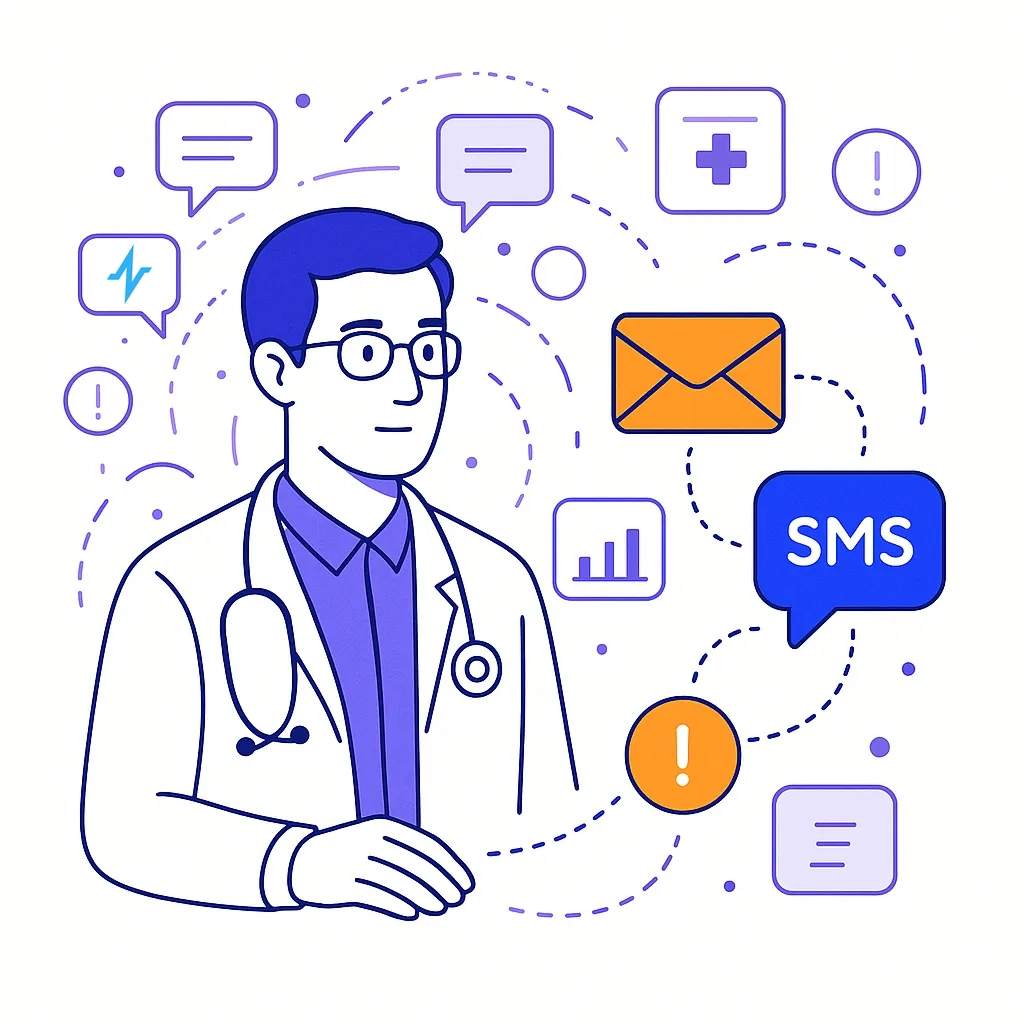
That’s where email and SMS marketing shine.
Done right, they can build trusted, compliant, and efficient touchpoints across the HCP lifecycle — from awareness to education to field follow-up.
And when you connect these channels through an integrated, compliant platform like Pulse Health, they become the foundation for a truly omnichannel strategy.
Key Takeaways
- Email and SMS are still the most reliable, measurable, and compliant ways to reach HCPs.
- Segmentation and personalization turn these channels from noise into value.
- Integration across CRM, marketing, and field ensures the entire org learns from every click.
- Compliance must be automatic, not manual.
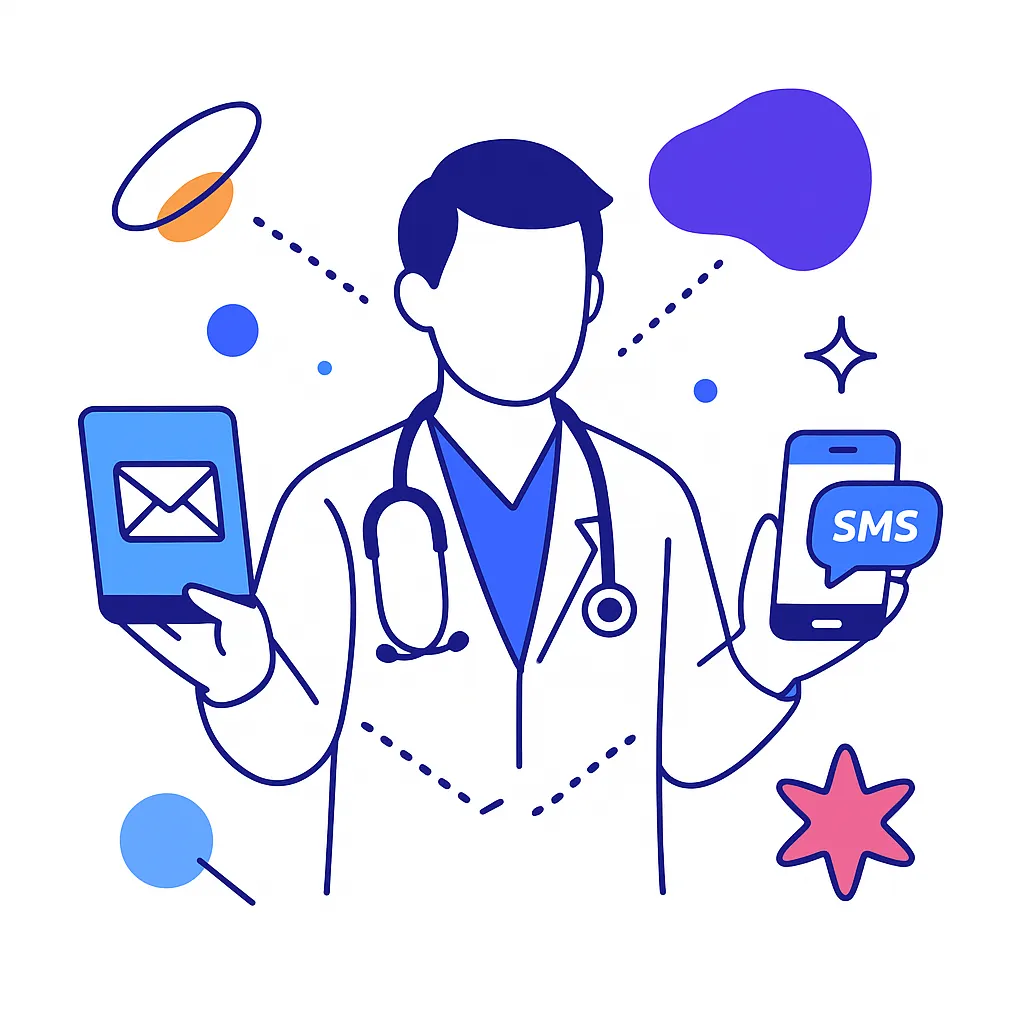
When orchestrated through Pulse Health, these channels become more than just outreach — they become a closed-loop engagement system built for pharma precision.
Why Email and SMS Still Matter for HCP Marketing
While social media and paid media get the buzz, email and SMS quietly remain pharma’s most consistent performers. Why? Reach, efficiency, and relevance.
The Data Speaks Clearly
| Channel | Average Open Rate | Primary Strength | Typical Use |
| Email (HCP) | 30–40% | Education, clinical content | Product updates, case studies, medical news |
| SMS (Opt-in HCP) | 85–95% | Urgency, reminders | Event registration, formulary updates, meeting confirmations |
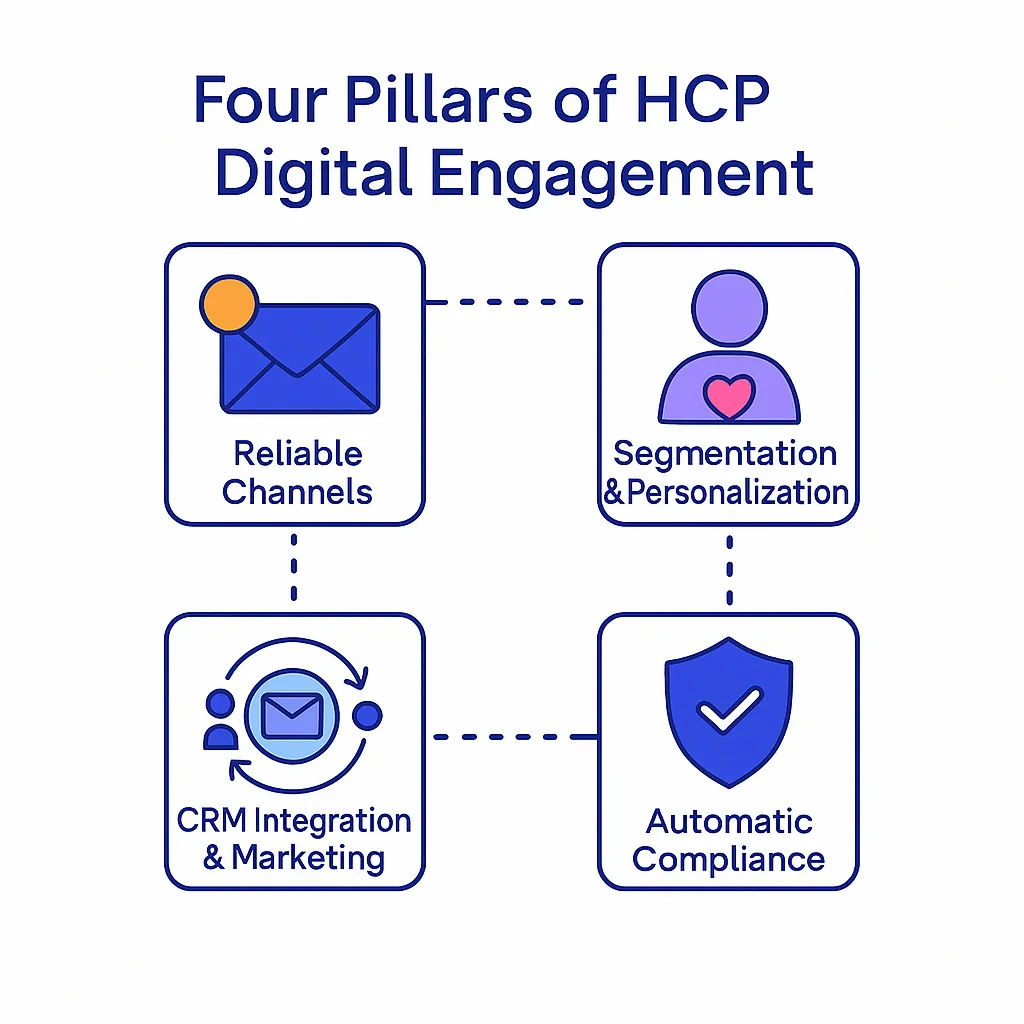
- Reach: 80–90% of healthcare professionals open professional emails weekly.
- Response speed: SMS messages are read within minutes, ideal for time-sensitive updates.
- Flexibility: Both channels can serve sales, medical, and marketing goals — everything from congress recaps to sample program alerts.
Example:
A cardiology brand can send an educational newsletter on new trial data (email), then follow up a week later with a short SMS reminder about rep availability. Same story, different channel — higher impact.
Building an HCP-First Email Strategy
In pharma and biotech marketing, email remains the cornerstone of digital engagement. It’s measurable, compliant, and — when executed well — capable of building real trust with clinicians. But to stand out in an inbox that’s overflowing with medical news, payer alerts, and brand updates, pharma marketers need precision.
A modern HCP-first email strategy blends data, empathy, and timing. Below are the four pillars that separate meaningful communication from noise.
1. Segment Intelligently
The foundation of every strong HCP campaign is segmentation — but not the superficial kind that just splits lists by specialty.
Today’s most effective teams use multi-dimensional segmentation, combining demographic, behavioral, and engagement data. Think of it as mapping who they are, what they care about, and how they engage.
| Segmentation Layer | Example Filters | Impact |
| Demographic | Specialty, role, region, institution type | Aligns content to clinical focus |
| Behavioral | Opens, clicks, webinar attendance, meeting notes | Predicts interest and readiness |
| Access & Payer | Local formulary status, reimbursement complexity | Localizes updates and sales follow-ups |
| Engagement Score | Frequency of response across channels | Adjusts cadence dynamically |
| Lifecycle Stage | New-to-brand vs. established prescribers | Shapes tone and message depth |
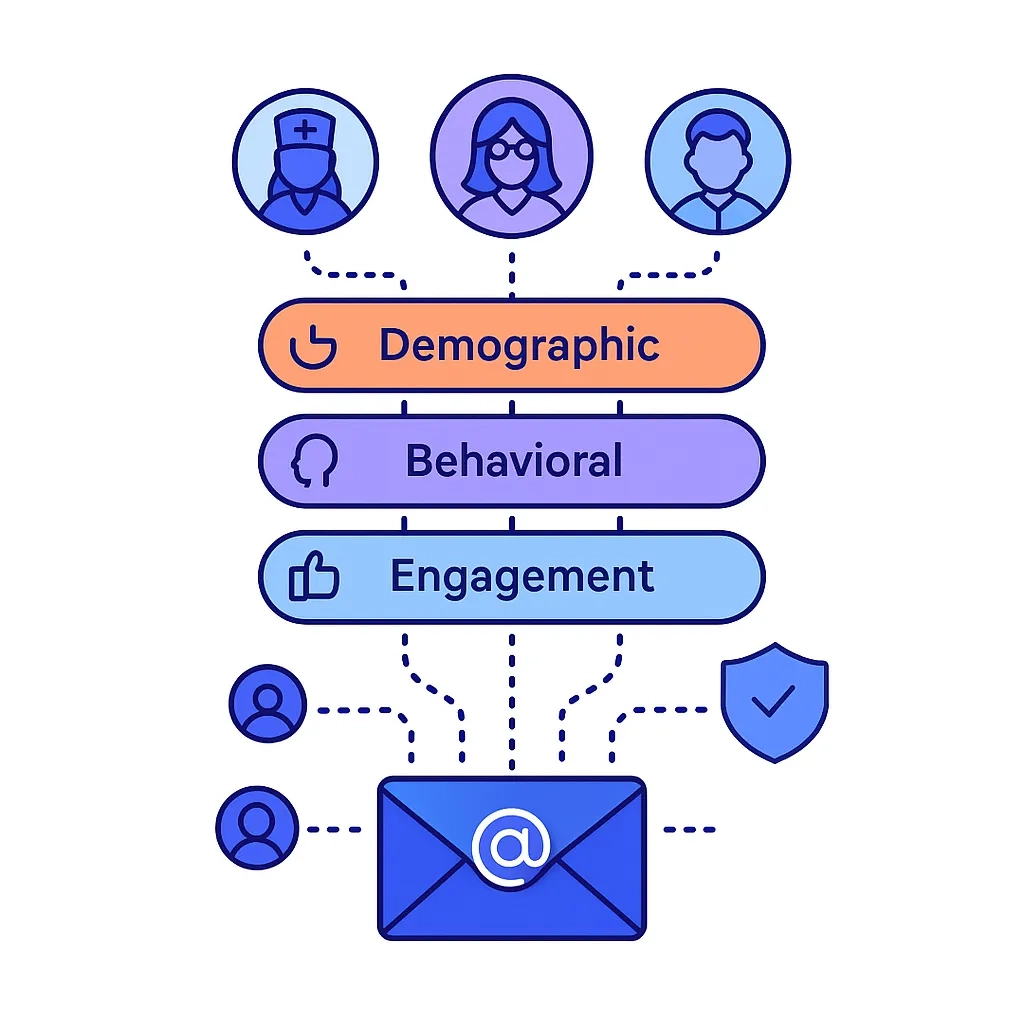
For example, a gastroenterologist practicing in a community hospital might value patient adherence tools, while a large-practice oncologist prefers trial recaps. Both are “HCPs,” but the path to engagement couldn’t be more different.
Pulse Health automates this complexity — connecting CRM data, regional access insights, and previous touchpoints to update segments in real time. That means your marketing and field teams always act on the same intelligence.
2. Personalize with Purpose
Personalization isn’t just a greeting — it’s a strategy.
Every email is an opportunity to show an HCP that your team understands their time, their workflow, and their needs. That starts by leveraging the right contextual data from CRM, territory activity, and behavioral analytics.
What True Personalization Looks Like
- Contextual follow-ups: If a rep met with Dr. Nguyen yesterday, send a “resource recap” email containing clinical reprints or updated coverage sheets instead of a generic product announcement.
- Adaptive cadence: When Dr. Rivera hasn’t opened an email in 60 days, Pulse automatically shifts her to a monthly digest rather than weekly sends.
- Behavioral branching: After Dr. Lee clicks on a “new data” email, an automated follow-up SMS asks if they’d like to discuss the findings with an MSL.
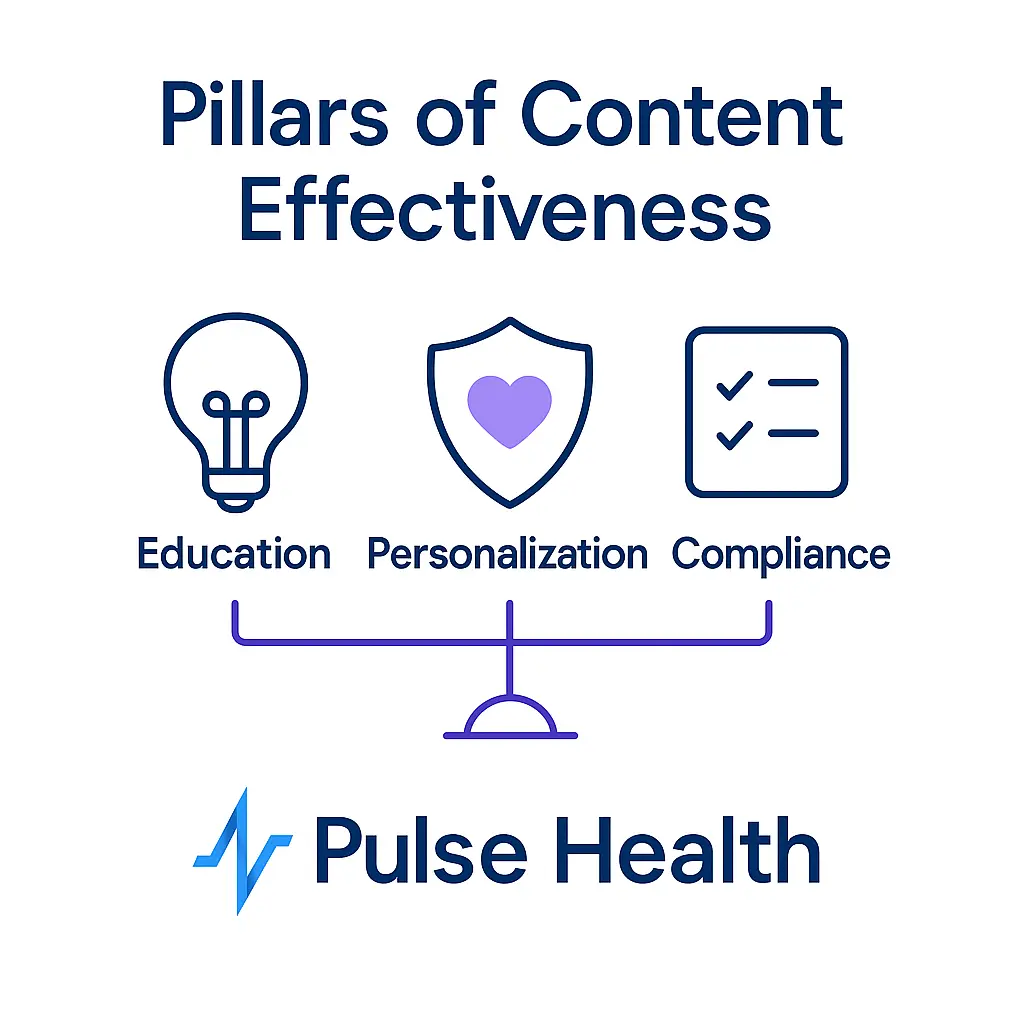
| Data Source | How It Drives Personalization | Pulse Example |
| CRM (rep visits, notes) | Trigger next-step educational emails | “Following up on your discussion with Alex — here’s the real-world evidence summary.” |
| Territory Data | Add localized context | “Now covered by BlueCross NC effective March 1.” |
| Engagement Score | Adapt send frequency | Increase cadence for active HCPs; pause for dormant ones. |
| Specialty & Role | Tailor language and format | MSLs get clinical briefs; NPs get simplified guides. |
Tone matters, too. Oncologists may prefer tight, data-heavy bulletins. PCPs often engage better with plain-language summaries and patient handouts. Personalization means striking the right tone for the right clinician at the right time.
Pulse Health uses dynamic fields and rule-based logic to blend CRM and engagement data into truly human-sounding messages — no “Hi Dr. {FirstName}” filler required.
3. Lead with Value, Not Promotion
HCPs are constantly pitched to. To stand out, your emails must educate before they sell.
A “value-first” strategy prioritizes credibility and relevance over brand repetition. Every message should answer:
“What’s in it for the clinician — and ultimately, for their patients?”
Content That Builds Trust
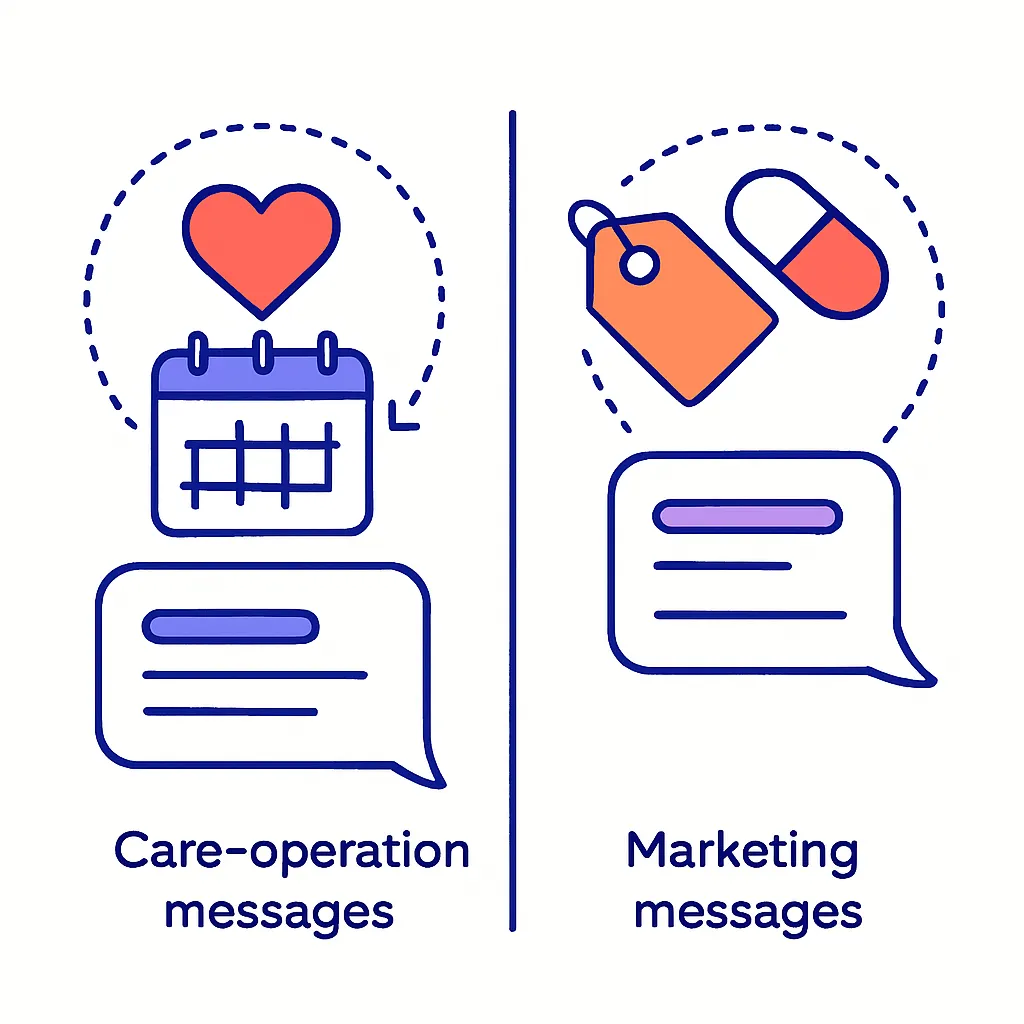
- Peer-reviewed summaries: Condense new trial data into digestible takeaways with citations.
- Case studies: Highlight real-world applications rather than brand slogans.
- Tools and resources: Share patient education PDFs, dosing calculators, or formulary guides.
- Clinical education: Promote CME opportunities or congress recaps that deepen expertise.
- Operational efficiency: Updates on coverage, access, or prior authorization that save staff time.
Pharma teams that consistently deliver utility over promotion enjoy higher retention and trust. According to Pulse engagement data, emails offering educational or workflow value see 2.3× higher click-through rates than purely promotional ones.
| Message Type | Example Subject Line | Outcome |
| Educational | “3 New Studies on Adherence in Type 2 Diabetes” | High engagement |
| Practical | “Updated Coverage Form for Aetna Practices” | Action-driving |
| Promotional | “See Why Our Drug Is #1” | Low engagement, higher unsubscribes |
By positioning your brand as a resource — not a distraction — you earn the right to deliver more commercial messages later in the journey.
4. Timing & Cadence: Respect the Workflow
Even the best message fails if it lands at the wrong time. Timing and frequency are where personalization meets practicality.
Know When HCPs Engage
Pulse Health’s engagement benchmarks reveal clear patterns across specialties:
| Specialty | Peak Email Open Times | Best Day to Send |
| Primary Care | 7–9 a.m., 12–2 p.m. | Tuesday or Wednesday |
| Oncology | 6–8 a.m., post-clinic 5–6 p.m. | Monday or Thursday |
| Cardiology | 7–9 a.m. | Wednesday |
| Psychiatry | 8–10 a.m. | Friday |
Emails sent during these windows consistently outperform off-hour sends by 25–40%.
Find the Right Rhythm
- High-engagement segment: 1–2 targeted emails per week, alternating topics (education → access → field invite).
- Low-engagement segment: 1 curated monthly digest with multiple resources in one place.
- Reactivation flows: One short SMS or in-app notification 7–10 days after last engagement.

Respecting cadence builds credibility. Over-communication breeds fatigue, but consistent, valuable messaging fosters expectation: “If I open an email from this brand, it’ll be worth my time.”
Automate Responsibly
Automation should simplify, not spam. Pulse Health’s Smart Scheduler analyzes historical open times per recipient and queues future sends accordingly — so each HCP gets the right message at the right time, without manual scheduling.
Precision timing isn’t guesswork — it’s data science. And when powered by Pulse’s omnichannel analytics, every email feels timely, not timed.
Putting It All Together
When segmentation, personalization, value, and timing align, email becomes more than a marketing channel — it becomes a trusted extension of the field relationship.
The right system ensures your team isn’t just sending more emails; it’s sending smarter, more human messages that drive measurable impact.
That’s exactly what Pulse Health was built to do.
The Ideal Email Flow (Simplified)
| Stage | Email Type | Goal | Pulse Health Advantage |
| Awareness | Educational content | Build credibility | Auto-segment by specialty |
| Engagement | Rep intro or data recap | Encourage interaction | Syncs with CRM for rep follow-up |
| Action | Meeting scheduling | Drive conversions | Integrated booking + compliance logging |
Pulse Health automatically syncs digital interactions to field CRMs — so when Dr. Smith clicks a resource, the local MSL sees it instantly.
SMS: The Quiet Power Channel
SMS is pharma’s most underused yet most potent engagement tool. Short, timely messages can achieve what no email can — instant response.
When to Use SMS for HCP Engagement
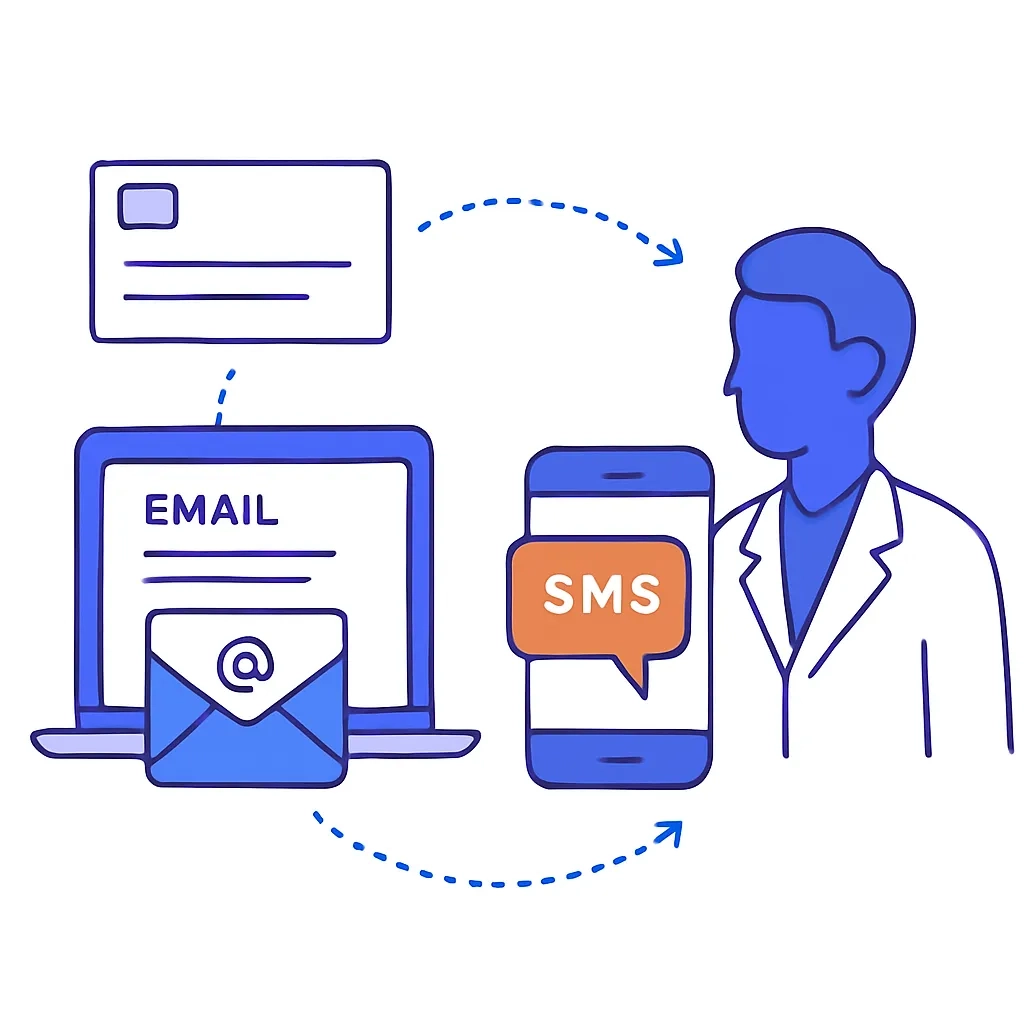
- Event reminders: “Hi Dr. Lee — your oncology roundtable starts in 1 hour. Reply YES to confirm attendance.”
- Approved updates: Notify HCPs of new clinical data or formulary access changes.
- Meeting confirmations: “Your rep meeting with Alex Nguyen is confirmed for 3 p.m. tomorrow.”
Each message should be:
- Under 160 characters
- Compliant with opt-in and privacy standards
- Logged automatically for auditing
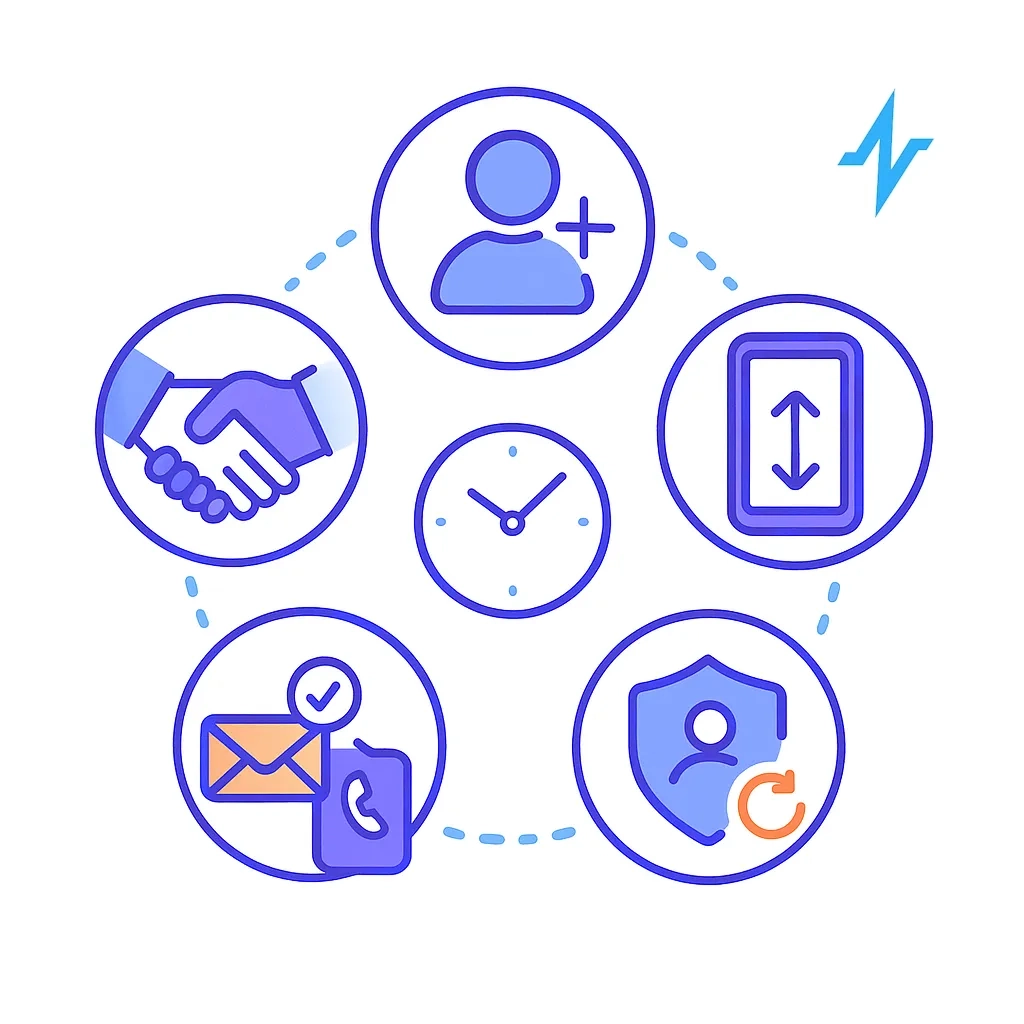
Compliance Checklist for SMS
| Requirement | Description |
| Opt-In Only | HCP must consent before receiving messages. |
| HIPAA Safe | Never include patient data or identifiers. |
| On-Label Only | Messaging must adhere strictly to approved content. |
| Audit Trail | Retain message logs for compliance reviews. |
Pulse Health’s SMS module is built for two-way, HIPAA-compliant HCP communication — no risky third-party text apps required.
Integrating Email, SMS, and CRM: Closing the Loop
Here’s the truth: most pharma organizations run their marketing, CRM, and data systems in silos. Marketing sends an email, sales follows up days later, and analytics barely connect the dots.
When you unify engagement channels, everything changes.
The Old Way vs. The Pulse Way
| Traditional Setup | Pulse Health Unified Setup |
| Email platform → CSV export → CRM | Email and SMS natively tied to CRM |
| Manual segmentation | Real-time segment updates |
| No feedback loop | Every click updates HCP engagement score |
| Compliance managed manually | Built-in HIPAA + TCPA controls |
Example Flow:

- Dr. Chen clicks a formulary update email.
- Pulse triggers an SMS reminder 3 days later: “Now available at CVS Caremark.”
- CRM engagement score rises automatically, alerting the field rep to follow up.
This is closed-loop engagement in action — automated, measurable, and compliant.
Measuring Success: The Metrics That Actually Matter
It’s tempting to obsess over open rates. But real value lies deeper.
Vanity Metrics (Skip These)
- Open rate
- Unsubscribes
- Total sends

Impact Metrics (What Counts)
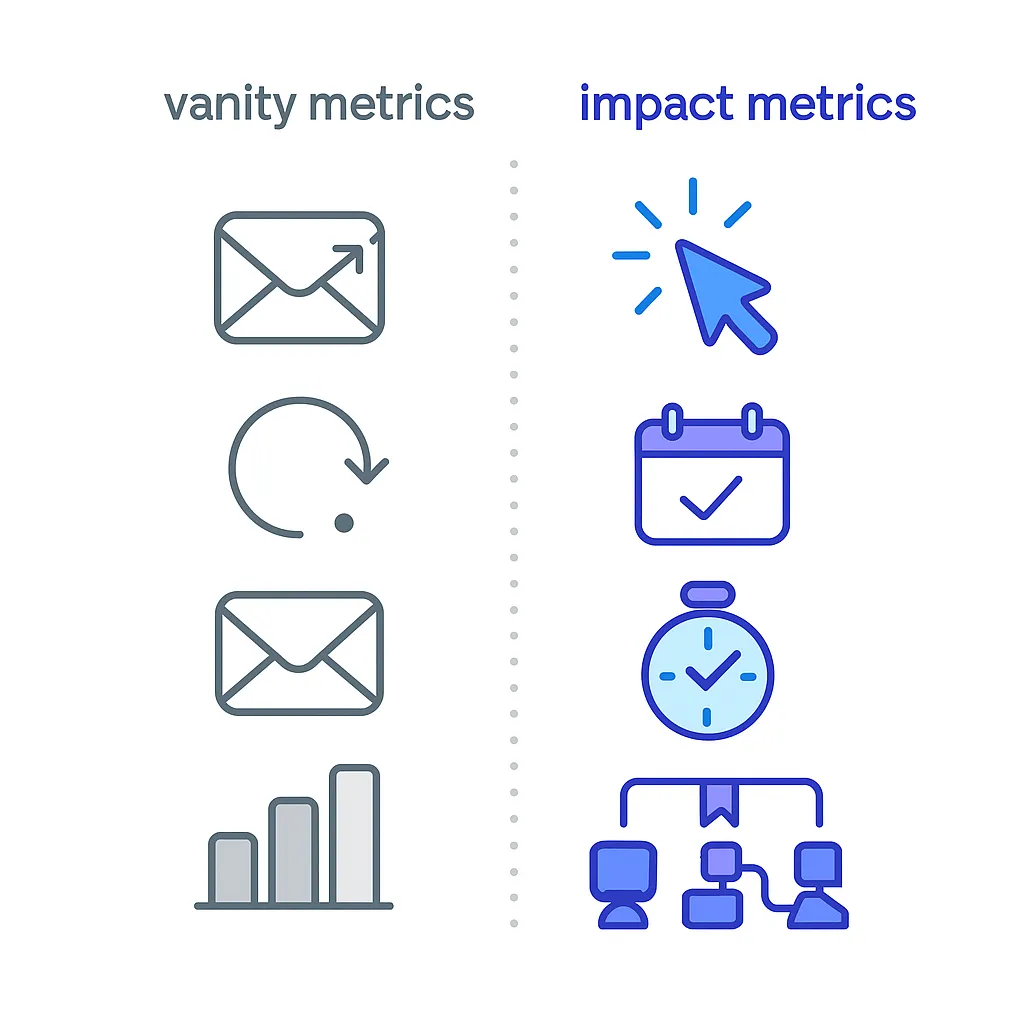
- Click-to-content rate: Did HCPs consume clinical info?
- Meeting conversion rate: Did engagement drive rep or MSL meetings?
- Engagement longevity: Are HCPs consistently interacting with content?
- Field alignment: Did digital touches translate into better rep timing?
Pulse dashboards combine these metrics to visualize cross-channel impact — letting marketers and field teams see exactly which messages are driving meaningful interactions.
Privacy, Consent, and Trust: The Non-Negotiables
In HCP marketing, trust is everything — and compliance is how you maintain it.
- HIPAA: Protects patient-linked data in communications and storage.
- CAN-SPAM: Requires clear identification and opt-out options for email.
- TCPA: Governs SMS consent and frequency.

Yet many pharma teams still rely on general-purpose platforms like Mailchimp or Twilio. These tools aren’t designed for the privacy, traceability, and audit needs of regulated healthcare marketing.
Pulse Health solves that by design:
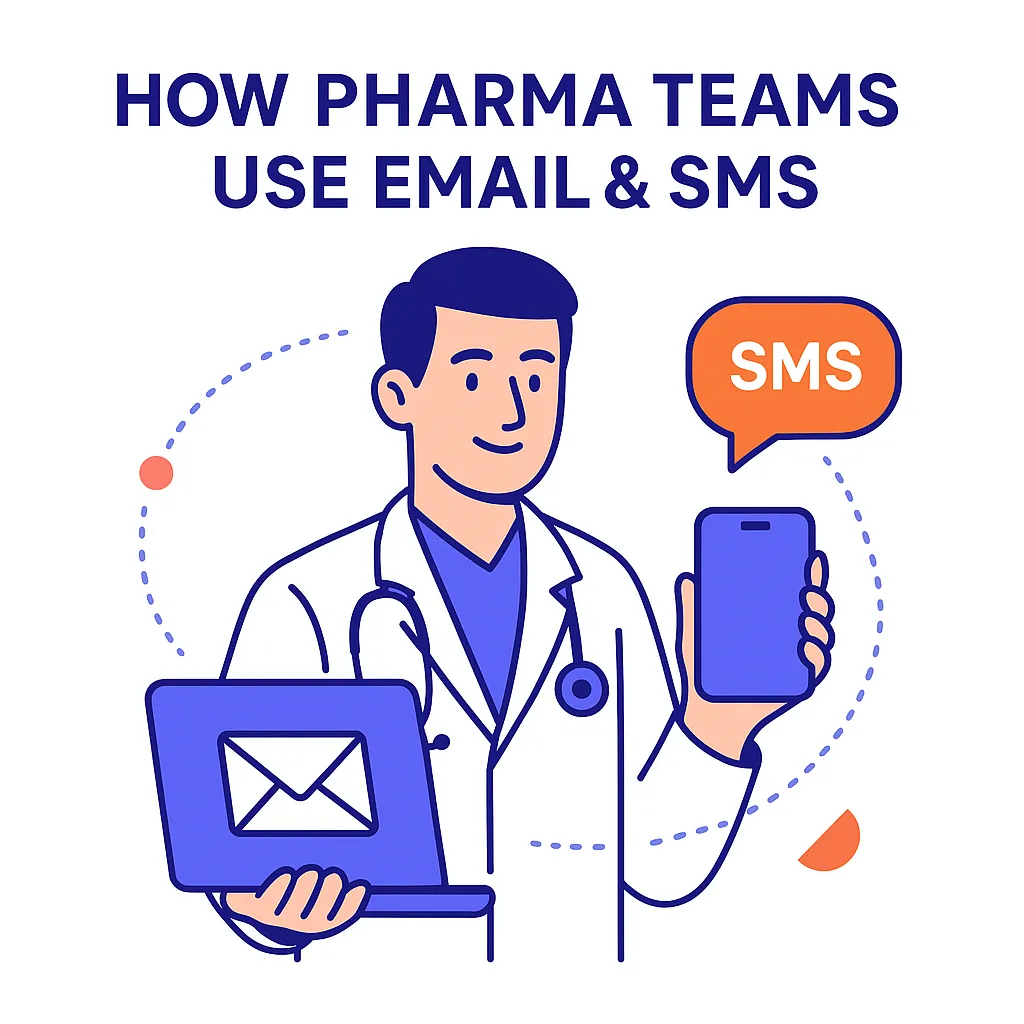
- Role-based access control
- Automatic audit trails
- Pre-approved content workflows
- Secure data storage across all channels
With Pulse, compliance isn’t an afterthought — it’s baked into every send.
Example Scenario: From Click to Call
Let’s put it all together.
Brand: Neurology biotech
Objective: Re-engage HCPs after clinical conference
Flow:
- Send a recap email highlighting key trial results and download link.
- Track who clicks to download slides.
- Three days later, send SMS: “Hi Dr. Alvarez — your local rep can walk you through the data in detail. Would you like to schedule a meeting?”
- If the HCP replies YES, the meeting is logged and synced automatically to the rep’s calendar.
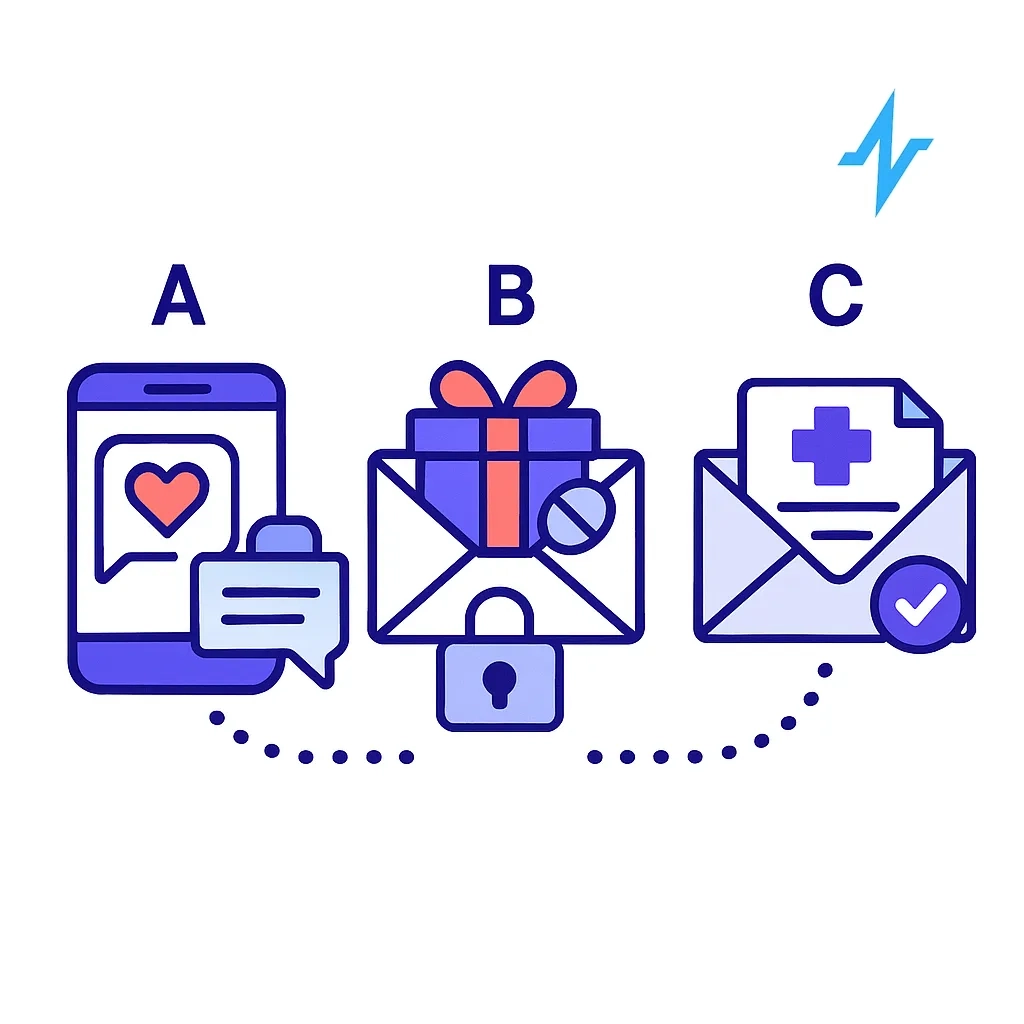
This workflow feels personalized, relevant, and human — because it is. And it all happens through one compliant Pulse Health ecosystem.
5 Ways Pulse Health Simplifies HCP Email + SMS Engagement
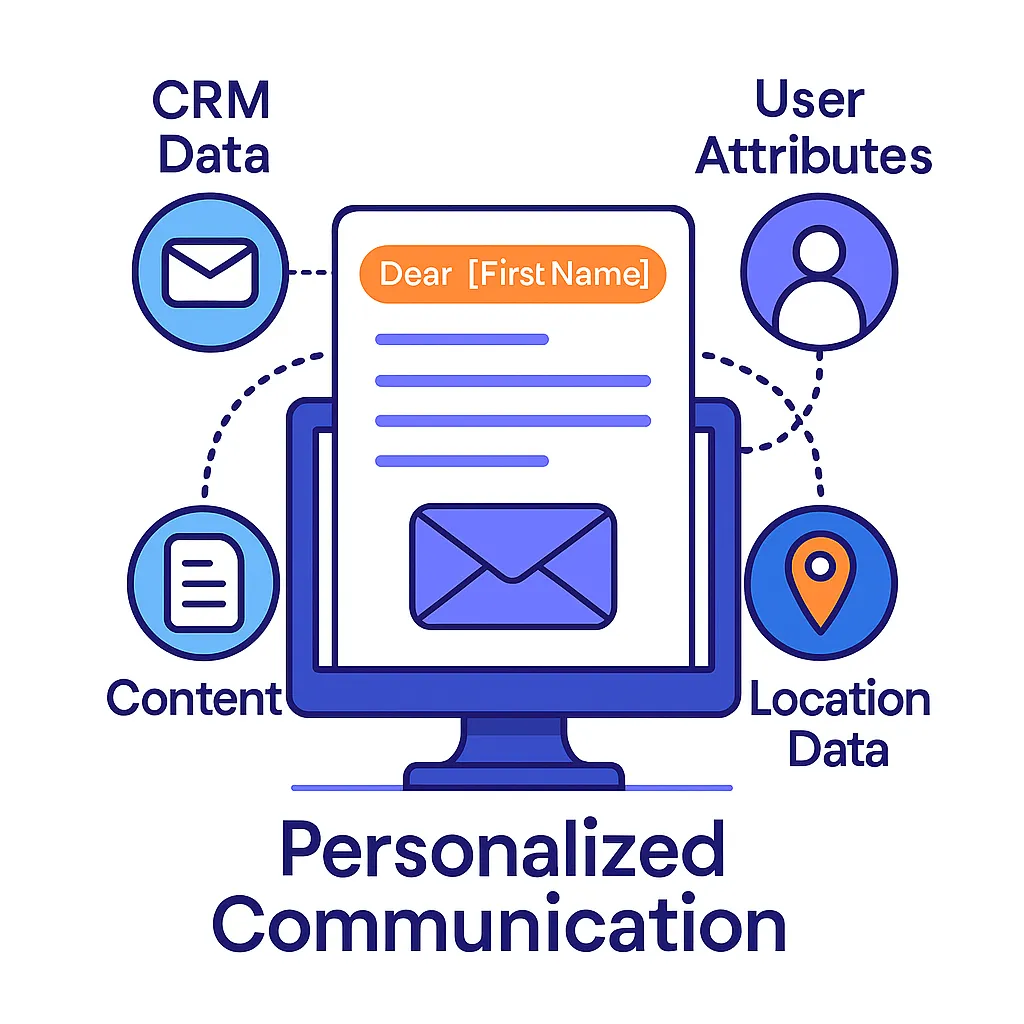
- Unified Data – Every digital interaction ties directly into your CRM, eliminating manual reconciliation.
- Compliance Guardrails – Native HIPAA, CAN-SPAM, and TCPA protections built in.
- Smart Segmentation – Micro-segments by specialty, behavior, and region auto-refresh daily.
- Omnichannel Dashboards – Real-time reporting connects marketing and field performance.
- Field Sync – Sales and MSL teams see engagement history before every call.
Pro Tips for HCP Email + SMS Campaigns
✅ Pair educational and logistical messages
An HCP is more likely to read your next product update if your last message actually helped them.
✅ Use progressive profiling
Start with minimal data capture (e.g., specialty and NPI). Build richer profiles over time through engagement patterns.
✅ Optimize for mobile
80% of HCP emails are read on mobile devices — concise subject lines and responsive layouts are non-negotiable.
✅ Test send times
Pulse Health’s analytics can reveal your best-performing hours and days per specialty.
✅ Close the loop with reps
End every automation flow with a rep-visible signal — turning digital clicks into live conversations.
Quick Comparison: Consumer Platforms vs. Pulse Health
| Feature | Mailchimp / Twilio | Pulse Health |
| HIPAA Compliant | ❌ | ✅ |
| HCP Segmentation | Limited | Advanced (specialty, territory, behavior) |
| CRM Integration | Manual or basic API | Native bi-directional sync |
| Compliance Logs | Manual | Automatic |
| Cross-Channel Reporting | Fragmented | Unified |
| Audit Readiness | Low | Enterprise-grade |

If you’re still exporting lists and reconciling data across three systems, your team is spending more time on compliance paperwork than engagement.
See Pulse in Action
Ready to modernize your HCP communication stack?
Pulse Health helps pharma and biotech teams unify email, SMS, and CRM engagement in one HIPAA-compliant platform — designed for both marketing and field excellence.
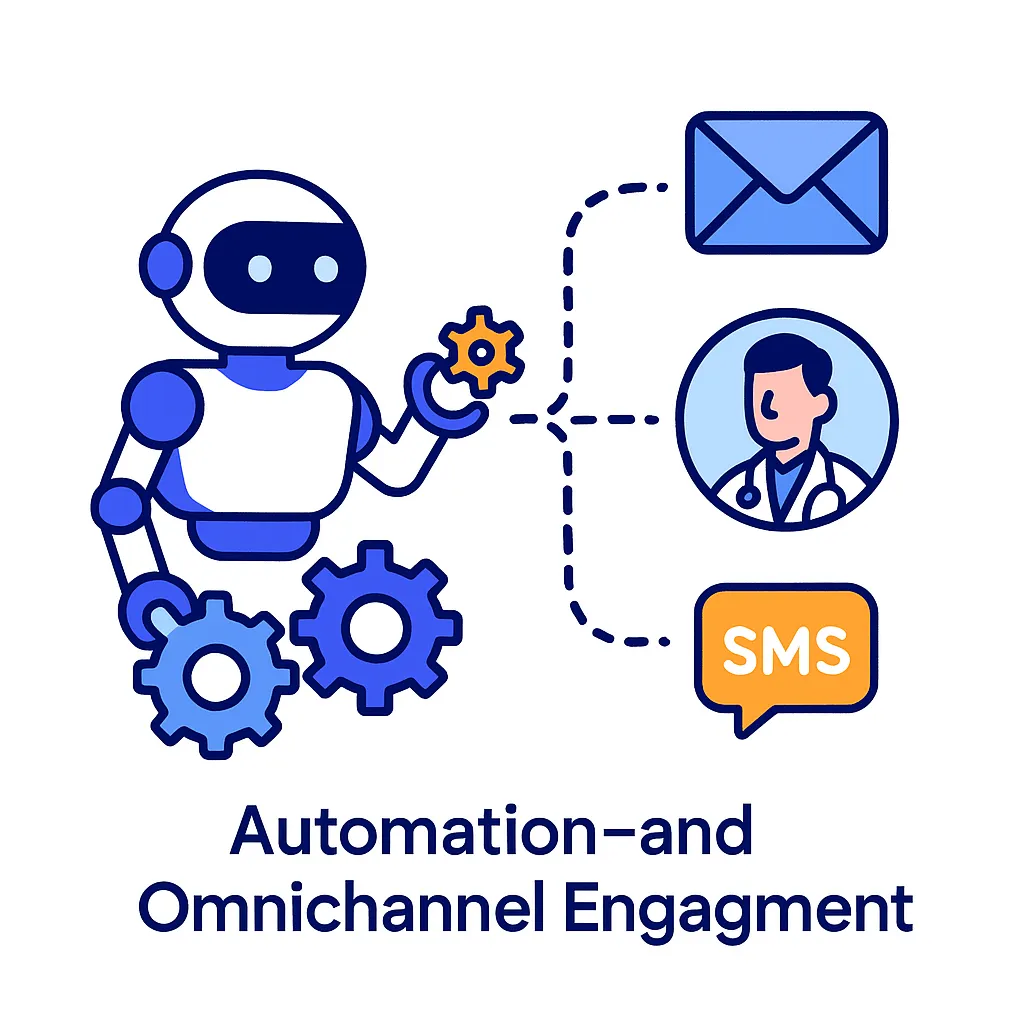
Book a demo today and see how your team can turn digital signals into real HCP relationships.



